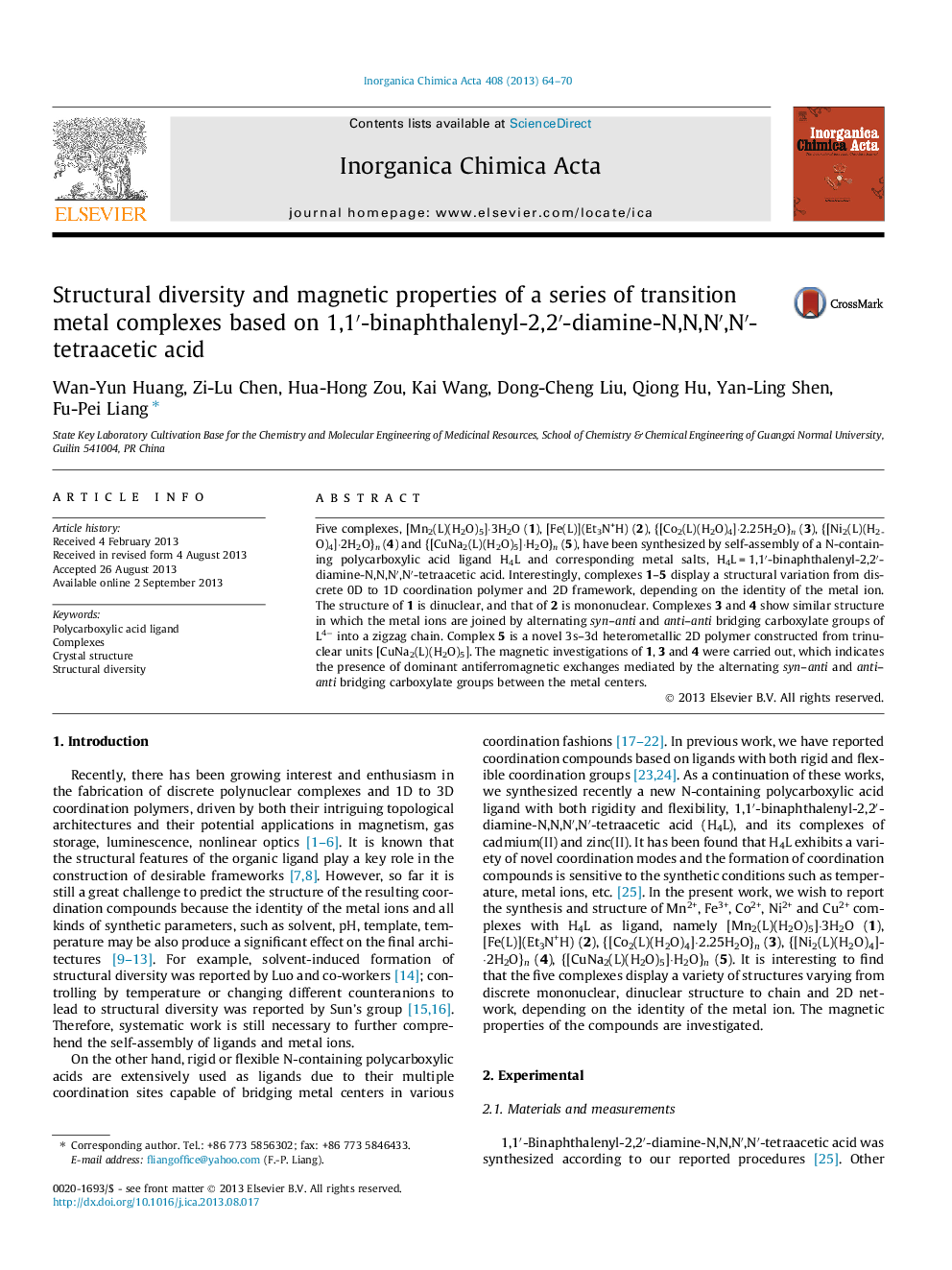| Article ID | Journal | Published Year | Pages | File Type |
|---|---|---|---|---|
| 1310213 | Inorganica Chimica Acta | 2013 | 7 Pages |
•Mn2+/Fe3+/Co2+/Ni2+/Cu2+ complexes display 0D–2D structural variation.•Structural variation depends on the identity of the metal ion.•A variety of coordination modes of a polycarboxylic acid ligand were exhibited.
Five complexes, [Mn2(L)(H2O)5]·3H2O (1), [Fe(L)](Et3N+H) (2), {[Co2(L)(H2O)4]·2.25H2O}n (3), {[Ni2(L)(H2O)4]·2H2O}n (4) and {[CuNa2(L)(H2O)5]·H2O}n (5), have been synthesized by self-assembly of a N-containing polycarboxylic acid ligand H4L and corresponding metal salts, H4L = 1,1′-binaphthalenyl-2,2′-diamine-N,N,N′,N′-tetraacetic acid. Interestingly, complexes 1–5 display a structural variation from discrete 0D to 1D coordination polymer and 2D framework, depending on the identity of the metal ion. The structure of 1 is dinuclear, and that of 2 is mononuclear. Complexes 3 and 4 show similar structure in which the metal ions are joined by alternating syn–anti and anti–anti bridging carboxylate groups of L4− into a zigzag chain. Complex 5 is a novel 3s–3d heterometallic 2D polymer constructed from trinuclear units [CuNa2(L)(H2O)5]. The magnetic investigations of 1, 3 and 4 were carried out, which indicates the presence of dominant antiferromagnetic exchanges mediated by the alternating syn–anti and anti–anti bridging carboxylate groups between the metal centers.
Graphical abstractMn(II), Fe(III), Co(II), Ni(II) and Cu(II) complexes with a N-containing poly carboxylic acid ligand were obtained. These complexes display a structural variation from discrete 0D to 1D coordination polymer and 2D framework, depending on the identity of the metal ion.Figure optionsDownload full-size imageDownload as PowerPoint slide
